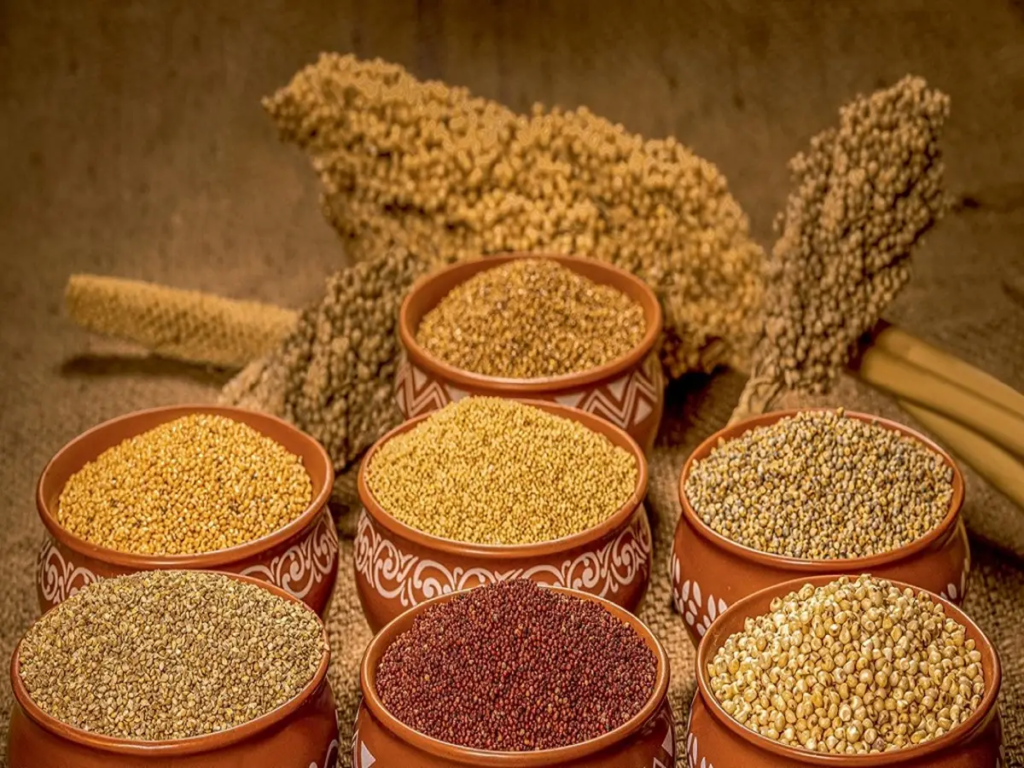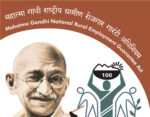The International Year of Millets has been proclaimed by the Food and Agriculture Organization of the United Nations (FAO) for 2023.
Millets have unique nutritive qualities (they are rich in protein, dietary fiber, antioxidants, and minerals) as well as unique agricultural qualities (they are drought-resistant and appropriate for semi-arid areas).
In India, two varieties of millets are cultivated. Minor millets include foxtail, little millet, kodo, proso, and field millet, while major millets include sorghum, pearl millet, and finger millet.
Growing public knowledge of millets’ positive effects on human health and the environment, as well as initiatives to restore traditional farming methods and assist small-scale farmers, are what are driving India’s millet revolution. It is viewed as an answer to the nation’s dual problems of advancing healthy agriculture and public health.
Why are millets valued as essential “NutriCereals”?

Millets can thrive in bad soil and are drought-resistant, requiring less water than other staple food crops. They are thus an appropriate food product for regions with erratic weather and limited water supplies.
Full of nutrients:
A excellent supply of fiber, protein, vitamins, and minerals is millets.
Millets are appropriate for individuals with celiac disease or gluten intolerance because they are inherently gluten-free.
Millets are a flexible crop choice for producers because they can be produced in a variety of soils and climates.
Millets are frequently produced using traditional farming techniques, which are more ecologically benign and sustainable than contemporary, industrial farming techniques.
Millets can thrive in bad soil and are drought-resistant, requiring less water than other staple food crops. They are thus an appropriate food product for regions with erratic weather and limited water supplies.
Describe Millet.
About: It is a word used to refer to a variety ofSmall-seeded annual grasses are grown mainly on marginal soils in arid parts of temperate, subtropical, and tropical climates as cereal products.
Ragi (finger millet), Jowar (sorghum), Sama (little millet), Bajra (pearl millet), and Variga are some of the popular millets found in India. (Proso millet).These grains have been around since the Indus 3 culture and were one of the first plants cultivated for sustenance.
Around 131 nations produce it, and 60 crore people in Asia and Africa eat it as their customary food.
India produces the most millet in the world, contributing 20% to worldwide production and 80% to Asia’s production.
India, Nigeria, and China make for more than 55% of the world’s millets output, making them the biggest producers in the world.
India was a significant millets supplier for a long time. However, Africa has seen a sharp rise in maize output in recent years.
What Barriers Prevent a Rise in Millet Production and Consumption?

Amount of Land Under Millet Cultivation Declining: Amount of land under millet cultivation previously was 35 million hectares. But only 15 million areas are used to produce it at the moment.
Low yields and tedious, time-consuming chores that women perform when processing millets are factors in the change in land use.
In addition, very little grain was processed into value-added goods and very little was sold.
Around 54 million tonnes of grains were consumed overall in 2019–20 through the Public Distribution System, the Integrated Child Development Scheme, and school lunches.
The state would need to purchase 10.8 million tonnes of millet if it were to substitute 20% or more of the rice and wheat with millet.
Millets are not productive enough: Over the past ten years, output of sorghum (jowar), pearl millet (bajra), and other millets, such as finger millet (ragi), has dropped or stagnated.
Lack of Knowledge: There is a low demand for millets in India because few people are conscious of their health advantages.
Millets are frequently more expensive than conventional grains, which limits their appeal to consumers with lower incomes.
Millets are not extensively accessible in both conventional and contemporary (e-commerce) retail marketplaces, making it challenging for customers to buy them.
Perceived flavor: Some people avoid eating millets because they think they have a dull or disagreeable flavor.
Agricultural Challenges: o poor harvests and poor income are frequently linked with millets production, which may deter farmers from doing so.
Due to the prevalence of rice and wheat, which are essential foods in India, millets find it challenging to contend in the marketplace.
Lack of Government Support: India hasn’t given millets enough support to encourage their production and usage, which has stunted their development.
What actions has the government done in this regard?
The National Millets Mission (NMM) was established in 2007 with the goal of promoting millets’ output and usage.
Price Support Scheme (PSS): Offers cash support to producers for millets farming.
Development of Value-Added goods: Promotes the manufacturing of millet-based goods with added value to boost the market for and usage of millets.
Promoting Millets in PDS: To make millets more available and cheap for the general public, the government added them to the Public Distribution System.
Promotion of Organic Farming: To boost the output and usage of organic millets, the government is encouraging organic farming of millets.
What should the next step be?

Adequate Public Support: The lowest families in rural India’s hilly and dryland areas are small producers who will only grow millets if they see a decent return on their investment.
Millet cultivation can become profitable, guarantee provision for the PDS, and eventually help a large portion of the people in terms of nutrition with enough public support.
The lack of knowledge about millets and their health advantages can be remedied through instruction and marketing.
Accessibility and Availability: Making millets more readily available in marketplaces and approachable to customers can promote usage.
Affordability:
Millets are often more costly than other
staple cereals, making them less available to
low-income customers. Consumption can be increased by addressing 7 affordability through government incentives or market actions.
Changing Perception: Through marketing and advertising, the idea that millets are a meal for the underprivileged needs to be dispelled.
Processing and Value-Added Products: Increasing the supply of value-added products and improving processing methods
Products made from millet may be more attractive to customers.
Collaboration can help to boost the quantity and demand of millets. Farmers, processors, and merchants should work together more.

